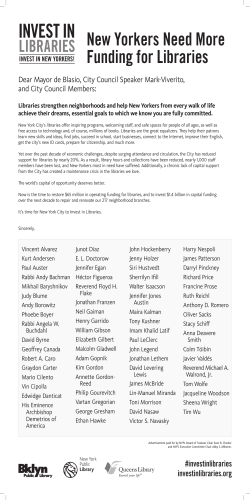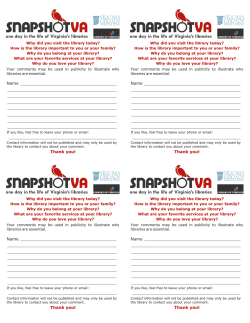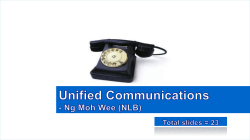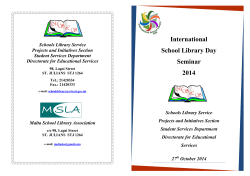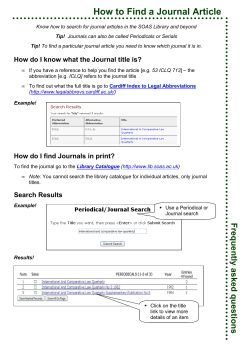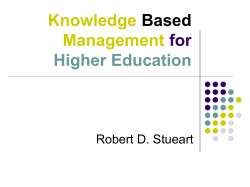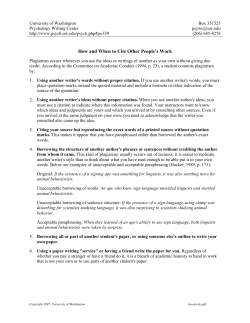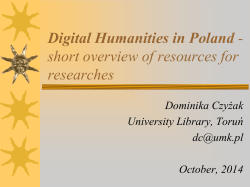
Do you have questions about library research? Need help finding
Chapter 1, Section 107. Available at: www.copyright.gov/title17/92chap1.html#107 The University of Minnesota's Thinking Through Fair Use Tool is a web-based test designed to guide you through the essential questions determining fair use of copyrighted materials. Try it out at: www.lib.umn.edu/copyright/fairthoughts Do you have questions about library research? Need help finding information for your project? Just ASK! Librarians are ready to help at www.libraries.psu.edu/help.html or at any Penn State Library service desk. Plagiarism Are copyright infringement and plagiarism the same thing? Copyright infringement and plagiarism are different concepts entirely. Plagiarism is claiming that you are the author of someone else's work. Copyright infringement is using someone else's work without their permission (and outside the boundaries of fair use). For more information on plagiarism, see the Libraries interactive tutorial, Plagiarism & You at http://tinyurl.com/n58l84 Citing your sources: If you are using information created by others in your work, it's essential that you properly cite your sources. Additional information on citing sources can be found at: www.libraries.psu.edu/psul/researchguides/citationstyles.html This publication is available in alternative media on request. Penn State is committed to affirmative action, equal opportunity, and the diversity of its workforce. Produced by Library Learning Services, University Libraries. U.Ed. LIB 10-161 ©Copyright, Fair Use, and the Libraries Getting Started © Copyright Are you starting a new research paper, a video, or other project that involves using and citing sources? What is copyright? This guide presents the basics of copyright, fair use, and citing materials. Links to great library resources for digital media projects are also shared. Finding images / video / audio and more The Libraries subscribe to over 500 online databases, featuring articles, e-books, audio material, streaming video, images, and much more. Libraries databases with multimedia content include: • Newspaper Photos (AP/Accunet Photo Archive) • Vanderbilt Television News Archive • Penn State Digital Collections Some of the best databases for finding audio/ video for multimedia projects can be found at: http://www.libraries.psu.edu/psul/lls/ students/digitalresources.html Please note: In some cases, the Libraries' license agreement for a specific database may be more restrictive than fair use. Copyright is a form of protection given to authors of creative works like music, movies, books, and photographs. Chances are, if you are using a material that you did not create yourself, it's copyrighted. The unauthorized use of copyrighted material is considered infringement — a violation. Fair Use What is fair use? Put simply, fair use is an exception to infringement. It's the use of copyrighted material without the authorization of the owner for an expressive purpose (i.e., quoting information from an article in your research paper). Examples of fair uses include commentary, criticism, or parody. If you use copyrighted works in your video/ podcast or other online material, does your use of the materials constitute fair use? Before you use copyrighted works, you should consider the four fundamental factors of fair use and determine whether, on balance, they favor your use more than the author's protection (these factors are from the U.S. Code Ttitle on Copyright): Fair Use Limited Time Limited Material Limited Audience For Critique, Education, or Satire • Protects Commercial Value of Work • • • • • What is the character of the use? How are you using the material? Does it contribute to the educational message/content of your research paper/project? • What is the nature of the work that you are using? Is it fact-based or highly expressive? • How much of the work will you use within your research paper/project? Are you using only a small portion of the work, e.g., a short video clip or a quote from an article? • What effect would this use have on the market for the original or for permissions if the use were widespread? Is the copyrighted work you're using out of print or unavailable? Would your use compete with the original? For example, applying the above factors, you can see that many works created for class assignments would fall under fair use. Use the four factors and review them to see how they apply to your specific situation. For more information, see: “Limitations on exclusive rights: Fair use.” Title 17 U.S. Code, continued
© Copyright 2026

